Cholesterol Level 234: What It Is and What to Do About It
What is cholesterol level 234? How can you manage it? Discover the facts and actionable steps to improve your heart health.
Understanding Cholesterol Level 234
Cholesterol level 234 falls within the “borderline high” range for total cholesterol. This means your total cholesterol level is between 200 and 239 milligrams per deciliter (mg/dL). While not yet in the “high” range, a cholesterol level of 234 indicates a need for closer attention to your heart health. Your doctor will also consider other factors, such as the ratio of LDL (“bad”) cholesterol to HDL (“good”) cholesterol, to determine your overall risk for heart disease.
Why Get a Cholesterol Test?
Cholesterol is a waxy, fat-like substance that your liver produces and that you also get from certain foods, particularly those from animal sources. When you have too much cholesterol, it can build up in the walls of your arteries, narrowing them and making it harder for blood to flow through. This process, called atherosclerosis, increases your risk of heart disease and heart attacks. A routine blood test is the best way to determine your cholesterol levels and take action to manage them.
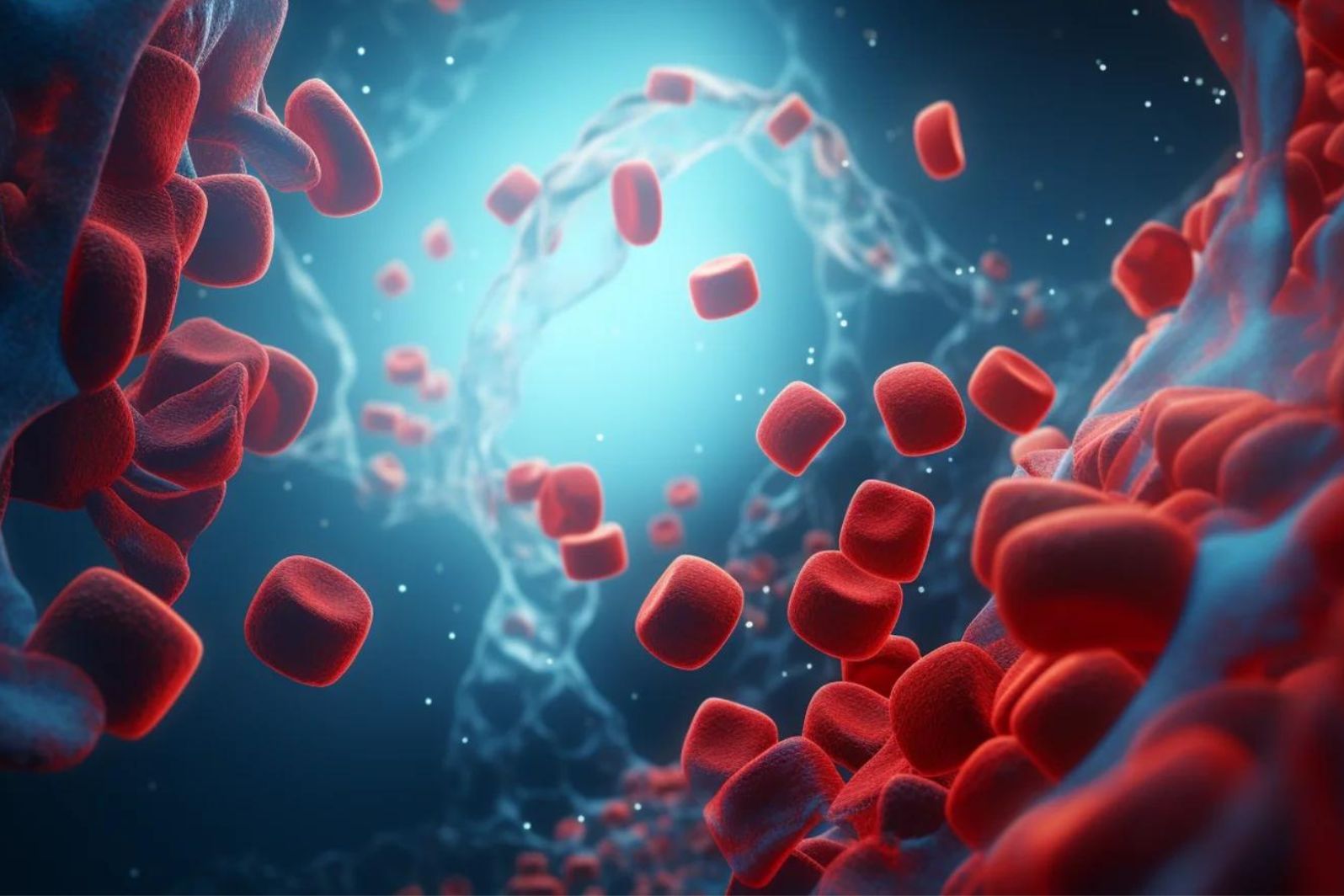
Understanding Cholesterol Test Results
A standard cholesterol test, also called a “lipid panel,” measures several types of cholesterol and fats in your blood:
- LDL (low-density lipoprotein) cholesterol is considered the “bad” cholesterol because it contributes to plaque buildup in the arteries. The lower your LDL, the better.
- HDL (high-density lipoprotein) cholesterol is the “good” cholesterol, as it helps remove LDL cholesterol from the bloodstream.
- Triglycerides are another type of fat in the blood that are also linked to heart disease risk.
Your doctor will look at all these numbers, not just your total cholesterol, to assess your overall heart disease risk and determine the best course of action.
Interpreting Cholesterol Test Results
Here’s what your cholesterol test results mean:
- Total cholesterol: Borderline high risk is 200-239 mg/dL, with 240 mg/dL and above being high risk.
- LDL cholesterol: 190 mg/dL and above is high risk, while levels equal to or less than 189 mg/dL may still require a 30-50% reduction in LDL to lower heart disease risk.
- HDL cholesterol: Less than 40 mg/dL for men and less than 50 mg/dL for women is considered high risk.
- Triglycerides: Very high risk is 500 mg/dL and above.
Your doctor will use these results, along with other risk factors, to determine the best approach to managing your cholesterol and heart health.

Steps to Manage Borderline High Cholesterol
If your cholesterol level is 234, which falls in the borderline high range, there are several steps you can take to bring it down and reduce your heart disease risk:
1. Get Regular Cholesterol Tests
You should have your cholesterol checked every 5 years, or more frequently if you have other risk factors for heart disease. This allows your doctor to monitor your levels and make any necessary adjustments to your treatment plan.
2. Make Changes in the Kitchen
Adjust your diet to include more heart-healthy foods, such as fruits, vegetables, whole grains, and lean proteins. Limit your intake of saturated and trans fats, which can raise your LDL cholesterol.
3. Read Food Labels
Pay attention to the cholesterol, saturated fat, and trans fat content of the foods you buy. Choose products with lower amounts of these unhealthy fats.
4. Get Moving
Regular physical activity, such as brisk walking, swimming, or cycling, can help raise your HDL cholesterol and lower your LDL cholesterol.
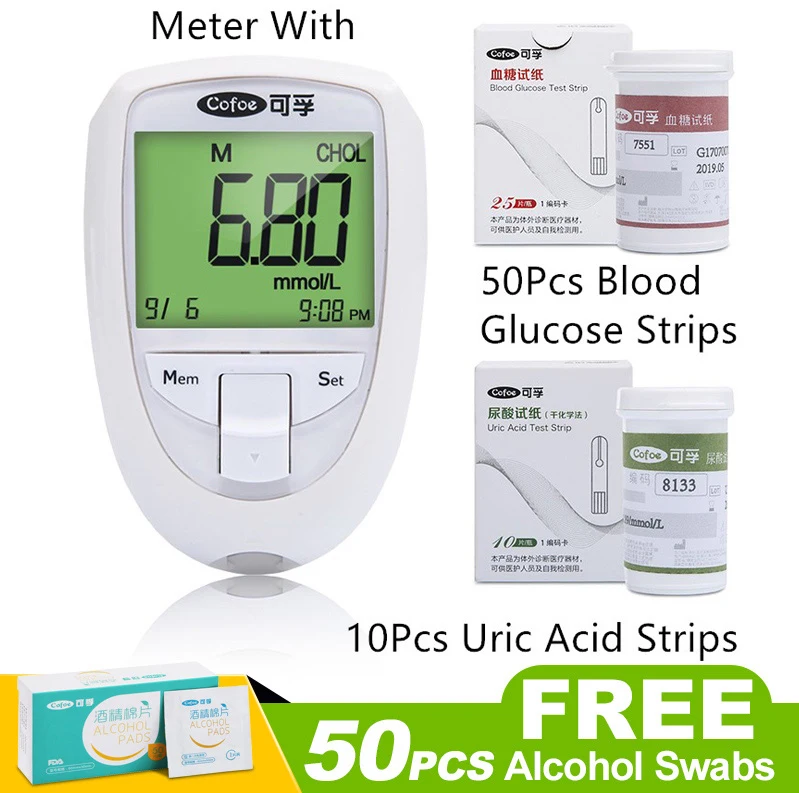
5. Lose Extra Weight
If you’re overweight, losing even a small amount of weight can help improve your cholesterol levels and reduce your heart disease risk.
6. Quit Smoking
Smoking is a major risk factor for heart disease, so quitting can significantly improve your overall heart health.
7. Check to See What’s Working
Work closely with your doctor to monitor your cholesterol levels and adjust your treatment plan as needed. Some people may also require medication, such as statins, to help manage their cholesterol.
By taking these steps, you can help lower your cholesterol level and reduce your risk of developing heart disease. Remember, managing your cholesterol is an ongoing process, but one that is essential for your long-term health.
What It Is and What to Do About It
Written by Jodi Helmer
- Cholesterol Tests
- Make Changes in the Kitchen
- Read Food Labels
- Get Moving
- Lose Extra Weight
- Quit Smoking
- Check to See What’s Working
- More
Has your doctor told you that you have “borderline” high cholesterol? That means your cholesterol level is above normal but not quite in the “high” range.
You have borderline high cholesterol if your total cholesterol is between 200 and 239 milligrams per deciliter (mg/dL).
Your doctor will also consider other things, like how much of your total cholesterol is LDL (“bad”) cholesterol and how much of it is HDL (“good”) cholesterol.
Making simple changes in your lifestyle is often enough to bring borderline cholesterol levels down to the normal range. Some people may also need to take medicine for it. And keep in mind that other things, like diabetes, high blood pressure, and smoking, also affect your heart health; it’s not just about cholesterol.
If you have borderline cholesterol, your doctor will decide whether you need treatment by looking at these and other risk factors for heart disease. They may ask you to get an imaging test of your heart called a coronary artery calcium (CAC) scan. This test reveals whether dangerous plaque has built up in your heart’s arteries.
You won’t know you have borderline cholesterol unless you get a cholesterol blood test. You should do that every 5 years.
The average American has a total cholesterol level of 200, which is in the borderline range.
You can turn it around before you get high cholesterol. Start with these steps.
Why Do I Need a Cholesterol Test?
Cholesterol is a waxy, fat-like substance. Your liver makes all the cholesterol your body needs. But you take in more cholesterol from certain foods, such as those from animals. If you have too much cholesterol in your body, it can build up in the walls of your arteries (as “plaque”) and eventually harden. This process, called atherosclerosis, actually narrows the arteries, making it harder for blood to travel through them.
This process, called atherosclerosis, actually narrows the arteries, making it harder for blood to travel through them.
Unfortunately, high cholesterol doesn’t cause symptoms. In later stages of atherosclerosis, though, you may have angina – severe chest pain from lack of blood flow to the heart. If an artery gets totally blocked, a heart attack results. A routine blood cholesterol test is a far better way of finding out what your cholesterol level is.
What Does a Cholesterol Test Measure?
In addition to measuring the total cholesterol in your blood, the standard cholesterol test (called a “lipid panel”) measures three specific kinds of fat:
Low-density lipoproteins (LDL). This is the “bad cholesterol,” the main cause of plaque buildup, which increases your risk of heart disease. In general, the lower the number, the better. But LDL cholesterol is only one part of a larger equation that measures a person’s overall risk of having a heart attack or stroke.
For years, guidelines focused on specific target numbers for people to achieve to lower their risk. The most recent guidelines focus on a person’s overall risk and, based on that risk, recommend a certain percentage of LDL reduction as one part of a way to prevent serious heart and blood vessel problems.
High-density lipoproteins (HDL). This is the “good cholesterol.” It transports bad cholesterol from the blood to the liver, where it is excreted by the body. Your HDL is another part of the equation that identifies the risk of a cardiovascular event. In general, the higher the number the better, although, as with LDL, the emphasis has shifted from specific target numbers to ways to reduce the overall risk.
Triglycerides. Another type of fat in the bloodstream, triglycerides are also linked to heart disease. They are stored in fat cells throughout the body.
What Do Cholesterol Test Numbers Mean?
If you have a lipoprotein profile, it’s important to look at all the numbers from the cholesterol test, not just the total cholesterol number. That’s because LDL and HDL levels are two top signs of potential heart disease. Use the information below to interpret your results (with the help of your doctor, of course). This will help you get a better idea about your risk for heart disease.
That’s because LDL and HDL levels are two top signs of potential heart disease. Use the information below to interpret your results (with the help of your doctor, of course). This will help you get a better idea about your risk for heart disease.
Total blood cholesterol level:
- High risk: 240 mg/dL and above
- Borderline high risk: 200-239 mg/dL
- Desirable: Less than 200 mg/dL
LDL cholesterol levels:
190 mg/dL and above represents a high risk for heart disease and is a strong sign that you can benefit from intensive treatment, including lifestyle changes, diet, and statin therapy for reducing that risk.
For LDL levels that are equal to or less than 189 mg/dL, the guidelines recommend strategies for lowering LDL by 30% to 50%, depending on what other risk factors you have that can affect the health of your heart and blood vessels.
HDL cholesterol:
- High risk: Less than 40 mg/dL for men and less than 50 mg/dL for women
Triglycerides:
- Very high risk: 500 mg/dL and above
- High risk: 200-499 mg/dL
- Borderline high risk: 150-199 mg/dL
- Normal: Less than 150 mg/dL
Use your diet to help lower your LDL cholesterol and raise your HDL cholesterol.
For the biggest impact, choose foods that are low in saturated fats and trans fats, and high in fiber, antioxidants, and omega-3 fatty acids. Whole grains, beans, apples, pears, oatmeal, salmon, walnuts, and olive oil are excellent heart-healthy choices.
Here are some more diet tips to help you lower your cholesterol:
Make meat lean. Cut back on red meats that are high in saturated fat and cholesterol, and choose only lean meats with very little visible fat. Examples of lean beef include London broil, eye of round, and filet mignon. Avoid processed meats like bacon and sausage, which are linked to higher odds of heart disease and diabetes.
Remove skin from poultry. That’s where much of the fat is.
Eat more seafood. It usually has less fat than other meat. The American Heart Association recommends eating two servings of fatty fish (like salmon, tuna, or mackerel) each week for heart health. Those fish are good sources of omega-3 fatty acids, which are good for you.
Limit saturated fat. These are found in whole-fat dairy products, mayonnaise, and hydrogenated or partially hydrogenated oils or fats (such as stick margarine). These products may also contain trans fats, which can raise your cholesterol level.
Go liquid. For cooking, replace saturated fats that are solid at room temperature (such as butter and shortening) with liquid monounsaturated fats such as olive, canola, and flaxseed oils. There’s evidence that eating moderate amounts of monounsaturated fat – found in such foods as nuts, seeds, and avocados – may lower LDL cholesterol.
Add fiber with plant foods. Good sources include grapefruit, apples, beans and other legumes, barley, carrots, cabbage, and oatmeal.
Get two daily servings of plant sterol-rich foods. These foods, such as nuts, can help lower cholesterol. Plant sterols are also added to some soft margarines, granola bars, yogurts, and orange juice.
You need to know how much saturated fat, trans fat, and cholesterol are in your favorite foods. That can help you make better choices.
Too much saturated fat can drive up your cholesterol level. It’s found mostly in animal products. Cholesterol also is found in animal products. Your doctor or a dietitian can let you know what your daily limit should be.
Artificial trans fats can raise your LDL (“bad”) cholesterol. They’re in packaged foods, like some crackers, cookies, pastries, and microwave popcorn.
Check the nutrition label. And because products marked “0 grams” of trans fats per serving can have up to a gram of trans fats, check the ingredients label, too. Anything marked “partially hydrogenated” is trans fat.
Exercise helps you get your cholesterol down from the borderline range.
Aim for at least 30 minutes of moderate-intensity exercise, such as brisk walking, per day (150 minutes each week). You can also do a more intense workout for 75 minutes a week.
Taking a walk, riding your bike, playing a team sport, or taking a group fitness class will increase your heart rate while raising HDL (“good”) cholesterol. Push yourself, if you can, but keep in mind that moderate exercise is better than none at all.
You can have borderline high cholesterol and be at a healthy weight. But if you’re overweight, losing those extra pounds can help bring your cholesterol level back down.
Losing as little as 5% of your body weight can lower your cholesterol levels. One study found that adults who took part in a 12-week exercise program lowered their LDL by 18 points, and their total cholesterol dropped 26 points.
With a combination of weight loss and a healthy diet, it’s possible to lower LDL levels up to 30% – results that are similar to taking cholesterol-lowering drugs.
If you’re not sure whether your weight is in a healthy place, ask your doctor to check your body mass index (BMI). A normal BMI is 18 to 25. If your BMI is 25 or higher, ask your doctor for advice on the best types of physical activity for you.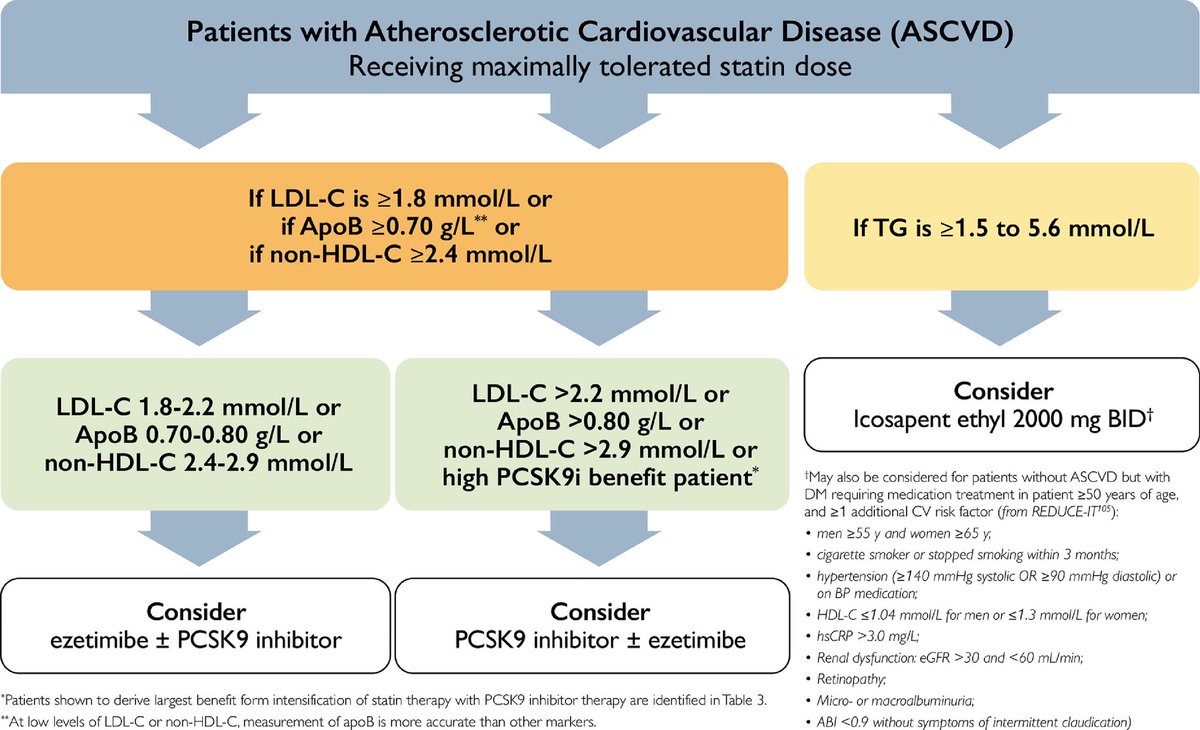
If you smoke, kicking the habit can help raise your HDL (“good”) cholesterol up to 10%.
Have you tried to quit smoking before? For many people, it takes a couple of tries. Keep trying until it sticks. It’s worth it, for your whole body’s health.
During regular screening appointments, your doctor will check your cholesterol levels to see if the changes you’ve made have gotten you to your cholesterol goal.
If lifestyle changes aren’t enough to lower borderline high cholesterol, your doctor may talk to you about medication.
Top Picks
What It Is and What to Do About It
Written by Jodi Helmer
- Cholesterol Tests
- Make Changes in the Kitchen
- Read Food Labels
- Get Moving
- Lose Extra Weight
- Quit Smoking
- Check to See What’s Working
- More
Has your doctor told you that you have “borderline” high cholesterol? That means your cholesterol level is above normal but not quite in the “high” range.
You have borderline high cholesterol if your total cholesterol is between 200 and 239 milligrams per deciliter (mg/dL).
Your doctor will also consider other things, like how much of your total cholesterol is LDL (“bad”) cholesterol and how much of it is HDL (“good”) cholesterol.
Making simple changes in your lifestyle is often enough to bring borderline cholesterol levels down to the normal range. Some people may also need to take medicine for it. And keep in mind that other things, like diabetes, high blood pressure, and smoking, also affect your heart health; it’s not just about cholesterol.
If you have borderline cholesterol, your doctor will decide whether you need treatment by looking at these and other risk factors for heart disease. They may ask you to get an imaging test of your heart called a coronary artery calcium (CAC) scan. This test reveals whether dangerous plaque has built up in your heart’s arteries.
You won’t know you have borderline cholesterol unless you get a cholesterol blood test. You should do that every 5 years.
You should do that every 5 years.
The average American has a total cholesterol level of 200, which is in the borderline range.
You can turn it around before you get high cholesterol. Start with these steps.
Why Do I Need a Cholesterol Test?
Cholesterol is a waxy, fat-like substance. Your liver makes all the cholesterol your body needs. But you take in more cholesterol from certain foods, such as those from animals. If you have too much cholesterol in your body, it can build up in the walls of your arteries (as “plaque”) and eventually harden. This process, called atherosclerosis, actually narrows the arteries, making it harder for blood to travel through them.
Unfortunately, high cholesterol doesn’t cause symptoms. In later stages of atherosclerosis, though, you may have angina – severe chest pain from lack of blood flow to the heart. If an artery gets totally blocked, a heart attack results. A routine blood cholesterol test is a far better way of finding out what your cholesterol level is.
What Does a Cholesterol Test Measure?
In addition to measuring the total cholesterol in your blood, the standard cholesterol test (called a “lipid panel”) measures three specific kinds of fat:
Low-density lipoproteins (LDL). This is the “bad cholesterol,” the main cause of plaque buildup, which increases your risk of heart disease. In general, the lower the number, the better. But LDL cholesterol is only one part of a larger equation that measures a person’s overall risk of having a heart attack or stroke.
For years, guidelines focused on specific target numbers for people to achieve to lower their risk. The most recent guidelines focus on a person’s overall risk and, based on that risk, recommend a certain percentage of LDL reduction as one part of a way to prevent serious heart and blood vessel problems.
High-density lipoproteins (HDL). This is the “good cholesterol.” It transports bad cholesterol from the blood to the liver, where it is excreted by the body.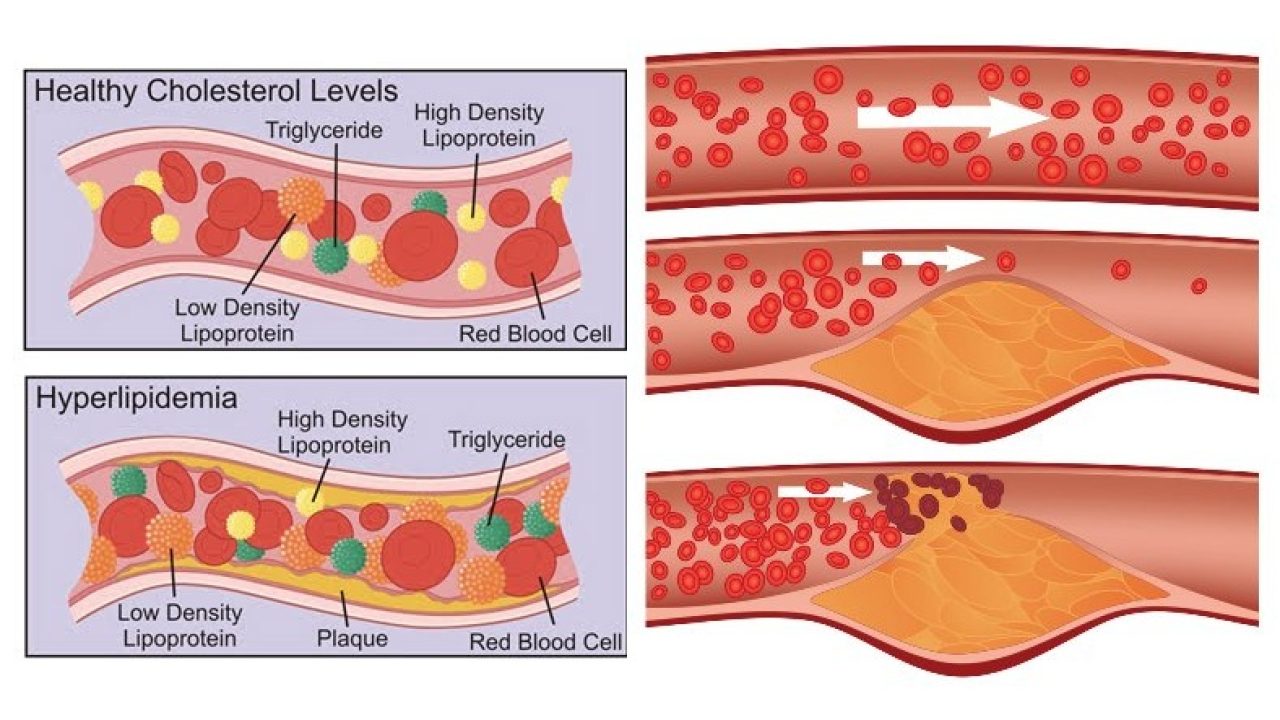 Your HDL is another part of the equation that identifies the risk of a cardiovascular event. In general, the higher the number the better, although, as with LDL, the emphasis has shifted from specific target numbers to ways to reduce the overall risk.
Your HDL is another part of the equation that identifies the risk of a cardiovascular event. In general, the higher the number the better, although, as with LDL, the emphasis has shifted from specific target numbers to ways to reduce the overall risk.
Triglycerides. Another type of fat in the bloodstream, triglycerides are also linked to heart disease. They are stored in fat cells throughout the body.
What Do Cholesterol Test Numbers Mean?
If you have a lipoprotein profile, it’s important to look at all the numbers from the cholesterol test, not just the total cholesterol number. That’s because LDL and HDL levels are two top signs of potential heart disease. Use the information below to interpret your results (with the help of your doctor, of course). This will help you get a better idea about your risk for heart disease.
Total blood cholesterol level:
- High risk: 240 mg/dL and above
- Borderline high risk: 200-239 mg/dL
- Desirable: Less than 200 mg/dL
LDL cholesterol levels:
190 mg/dL and above represents a high risk for heart disease and is a strong sign that you can benefit from intensive treatment, including lifestyle changes, diet, and statin therapy for reducing that risk.
For LDL levels that are equal to or less than 189 mg/dL, the guidelines recommend strategies for lowering LDL by 30% to 50%, depending on what other risk factors you have that can affect the health of your heart and blood vessels.
HDL cholesterol:
- High risk: Less than 40 mg/dL for men and less than 50 mg/dL for women
Triglycerides:
- Very high risk: 500 mg/dL and above
- High risk: 200-499 mg/dL
- Borderline high risk: 150-199 mg/dL
- Normal: Less than 150 mg/dL
Use your diet to help lower your LDL cholesterol and raise your HDL cholesterol.
For the biggest impact, choose foods that are low in saturated fats and trans fats, and high in fiber, antioxidants, and omega-3 fatty acids. Whole grains, beans, apples, pears, oatmeal, salmon, walnuts, and olive oil are excellent heart-healthy choices.
Here are some more diet tips to help you lower your cholesterol:
Make meat lean. Cut back on red meats that are high in saturated fat and cholesterol, and choose only lean meats with very little visible fat. Examples of lean beef include London broil, eye of round, and filet mignon. Avoid processed meats like bacon and sausage, which are linked to higher odds of heart disease and diabetes.
Cut back on red meats that are high in saturated fat and cholesterol, and choose only lean meats with very little visible fat. Examples of lean beef include London broil, eye of round, and filet mignon. Avoid processed meats like bacon and sausage, which are linked to higher odds of heart disease and diabetes.
Remove skin from poultry. That’s where much of the fat is.
Eat more seafood. It usually has less fat than other meat. The American Heart Association recommends eating two servings of fatty fish (like salmon, tuna, or mackerel) each week for heart health. Those fish are good sources of omega-3 fatty acids, which are good for you.
Limit saturated fat. These are found in whole-fat dairy products, mayonnaise, and hydrogenated or partially hydrogenated oils or fats (such as stick margarine). These products may also contain trans fats, which can raise your cholesterol level.
Go liquid. For cooking, replace saturated fats that are solid at room temperature (such as butter and shortening) with liquid monounsaturated fats such as olive, canola, and flaxseed oils. There’s evidence that eating moderate amounts of monounsaturated fat – found in such foods as nuts, seeds, and avocados – may lower LDL cholesterol.
There’s evidence that eating moderate amounts of monounsaturated fat – found in such foods as nuts, seeds, and avocados – may lower LDL cholesterol.
Add fiber with plant foods. Good sources include grapefruit, apples, beans and other legumes, barley, carrots, cabbage, and oatmeal.
Get two daily servings of plant sterol-rich foods. These foods, such as nuts, can help lower cholesterol. Plant sterols are also added to some soft margarines, granola bars, yogurts, and orange juice.
You need to know how much saturated fat, trans fat, and cholesterol are in your favorite foods. That can help you make better choices.
Too much saturated fat can drive up your cholesterol level. It’s found mostly in animal products. Cholesterol also is found in animal products. Your doctor or a dietitian can let you know what your daily limit should be.
Artificial trans fats can raise your LDL (“bad”) cholesterol. They’re in packaged foods, like some crackers, cookies, pastries, and microwave popcorn.
Check the nutrition label. And because products marked “0 grams” of trans fats per serving can have up to a gram of trans fats, check the ingredients label, too. Anything marked “partially hydrogenated” is trans fat.
Exercise helps you get your cholesterol down from the borderline range.
Aim for at least 30 minutes of moderate-intensity exercise, such as brisk walking, per day (150 minutes each week). You can also do a more intense workout for 75 minutes a week.
Taking a walk, riding your bike, playing a team sport, or taking a group fitness class will increase your heart rate while raising HDL (“good”) cholesterol. Push yourself, if you can, but keep in mind that moderate exercise is better than none at all.
You can have borderline high cholesterol and be at a healthy weight. But if you’re overweight, losing those extra pounds can help bring your cholesterol level back down.
Losing as little as 5% of your body weight can lower your cholesterol levels. One study found that adults who took part in a 12-week exercise program lowered their LDL by 18 points, and their total cholesterol dropped 26 points.
One study found that adults who took part in a 12-week exercise program lowered their LDL by 18 points, and their total cholesterol dropped 26 points.
With a combination of weight loss and a healthy diet, it’s possible to lower LDL levels up to 30% – results that are similar to taking cholesterol-lowering drugs.
If you’re not sure whether your weight is in a healthy place, ask your doctor to check your body mass index (BMI). A normal BMI is 18 to 25. If your BMI is 25 or higher, ask your doctor for advice on the best types of physical activity for you.
If you smoke, kicking the habit can help raise your HDL (“good”) cholesterol up to 10%.
Have you tried to quit smoking before? For many people, it takes a couple of tries. Keep trying until it sticks. It’s worth it, for your whole body’s health.
During regular screening appointments, your doctor will check your cholesterol levels to see if the changes you’ve made have gotten you to your cholesterol goal.
If lifestyle changes aren’t enough to lower borderline high cholesterol, your doctor may talk to you about medication.
Top Picks
Analysis for HDL cholesterol (High Density Lipoprotein Cholesterol) hand over to Ob
I confirm
More
- INVITRO org/ListItem”> Analyzes
- Biochemical…
- Lipids
- HDL cholesterol…
- Examination program for office workers
- Cardiovascular risk assessment
- Antiphospholipid syndrome (APS) diagnosis
- COVID-19
- Liver function assessment
- Kidney and genitourinary assessment
- Gastrointestinal assessment tract
- Diagnosis of connective tissue diseases
- Diagnostics of diabetes mellitus
- Diagnostics of anemia
- Oncology
- Diagnostics and management of osteoporosis therapy
- Blood biochemistry
- Thyroid diagnostics
- Hospital profiles
- Healthy you, healthy country
- Gynecology, reproduction
- Healthy child: for children from 0 to 14 years
- Sexually transmitted infections (STIs)
- Weight problems
- VIP examinations
- Respiratory diseases
- Allergies
- Determination of trace element reserves in the body
- Beauty
- Vitamins
- Diets
- Pre-diet lab tests
- Sports profiles
- Hormonal tests for men
- Depression
- Biochemical studies
- Glucose and carbohydrate metabolism metabolites
- Proteins and amino acids
- Bile pigments and acids
- Lipids
- Enzymes
- Kidney function markers
- Inorganic substances/electrolytes:
- Vitamins
- Proteins involved in iron metabolism
- Cardiospecific proteins
- Markers of inflammation
- Markers of bone metabolism and osteoporosis
9 0017 Determination of drugs and psychoactive substances
- Biogenic amines
- Specific proteins
- Biochemical studies
- Hormonal studies
- Laboratory evaluation of the pituitary-adrenal system
- Laboratory assessment of pituitary somatotropic function
- Laboratory assessment of thyroid function
- Assessment of parathyroid function
- Pituitary gonadotropic hormones and prolactin
- Estrogens and progestins
9001 7 Assessment of androgenic function
- Non-steroidal regulatory factors of the sex glands
- Pregnancy monitoring, biochemical markers of fetal status
- Laboratory evaluation of pancreatic endocrine function and diagnosis of diabetes
- Biogenic amines
- Laboratory assessment of the state of the renin-angiotensin-aldosterone system
- Factors involved in the regulation of appetite and fat metabolism
- Laboratory assessment of the endocrine function of the gastrointestinal tract
- Laboratory assessment hormonal regulation of erythropoiesis
- Laboratory evaluation of pineal gland function
- Clinical blood test
- Immunohematological studies
- Coagulological studies (coagulogram)
- Lymphocytes, subpopulations
- Immunoglobulins
9001 7 Complement components
- IgE – allergen-specific ), mixtures, panels, total IgE.

- IgG, allergen-specific
- ImmunoCAP technology
- AlcorBio technology
- ALEX technology
- Systemic connective tissue diseases
- Rheumatoid arthritis, joint lesions 900 06
- Antiphospholipid syndrome
- Vasculitis and kidney lesions
- Autoimmune lesions of the gastrointestinal tract. Celiac disease
- Autoimmune liver disease
- Neurological autoimmune disease
- Autoimmune endocrinopathies
- Autoimmune skin diseases
- Lung and heart diseases
- Immune thrombocytopenia
- Aluminum
- Barium
- Beryllium
- Boron
- Vanadium
- Bismuth
- Tungsten
- Gallium
- Germanium
- Iron
- Gold
- Iodine
- Cadmium
- Potassium
- Calcium
- Cobalt
- Silicon
- Lanthanum
- Lithium
- Magnesium
- Manganese
90 017 Copper
- Clinical analysis of urine
- Biochemical analysis of urine
9 0006
- Clinical stool examination
- Fecal chemistry
- Antisperm antibodies
- Viral infections
- Bacterial infections
- Fungal infections
- Parasitic infections
- TORCH infections (complex)
- Streptococcal infections
- Lifestyle and genetic factors
- Reproductive health
- Immunogenetics
- Rh factor
- Blood coagulation system
- Cardiac and vascular diseases
- Gastrointestinal tract diseases
- Central nervous system diseases
- Oncological diseases
- Metabolic disorders
- Description of the results of genetic research by a geneticist
- Pharmacogenetics
- System for detoxification of xenobiotics and carcinogens
- Fetal sex determination
- Fetal Rh factor
- Hereditary metabolic diseases
- Additional tests (after screening and consultation with a specialist) 9 0006
- Definition of biological relationship in the family: fatherhood and motherhood
- Calculated tests performed based on the results of SteatoScreen without blood sampling
- General assessment natural microflora of the organism
- Study of the microbiocenosis of the urogenital tract
- Femoflor: research profiles of dysbiotic conditions of the urogenital tract in women
- Specific assessment of the body’s natural microflora
- Blood
- Urine
- Stool
- Sper mogram
- Gastropanel
- Endoscopy
- Functional diagnostics
- Ultrasound
- Tests we don’t do
- New tests
- Getting results
- Additional research orders
- Medical consultant service
- Professional position
- Venous blood for analysis
- Tumor markers.
 View of a practical oncologist. Laboratory justifications.
View of a practical oncologist. Laboratory justifications. - Testosterone: diagnostic threshold, method-dependent reference values
- Laboratory assessment of lipid metabolism parameters in INVITRO
- Lipid profile: fasting or not fasting
- Assessment of the risk of developing cardiovascular diseases and their complications according to the modified SCORE scale.
- Atherosclerosis risk assessment.
- Detection of dyslipidemias.
- Primary hereditary hypercholesterolemia (hyperlipoproteinemia types IA and IIB types).
- Obesity.
- Obstructive jaundice.
- Nephrotic syndrome, chronic renal failure.
- Diabetes mellitus.
- Hypothyroidism.
- Cushing’s syndrome.
- Cholesterol-rich diet.
- Pregnancy.
- Anorexia nervosa.
- Taking medications (beta-blockers, diuretics, progestins, oral contraceptives, glucocorticoids, androgens).
- Atherosclerosis.
- Familial hypo-alpha-lipoproteinemia (Tangier’s disease).
- Cholestasis, chronic liver disease.
- Nephrotic syndrome, chronic renal failure.
- Diabetes mellitus.
- Obesity.
- Smoking.
- Taking medications: beta-blockers, danazol, diuretics, progestins, androgens.
- Diet rich in carbohydrates or polyunsaturated fatty acids.

- smoke, abuse alcohol, eat foods rich in animal fats;
- over the age of 45;
- are overweight and move little;
- suffer from diabetes;
- suffer from coronary heart disease, have had a previous myocardial infarction or stroke;
- with blood pressure readings of 140/90 or higher;
- have a family history of cardiovascular disease, high cholesterol, heart attacks or strokes.
9001 5
The cost of analyzes is indicated without taking biomaterial
All sections
Description
Method of determination
Homogeneous enzymatic colorimetric.
Test material
Blood serum
Synonyms : High density lipoproteins; HDL; HDL; HDL cholesterol; alpha cholesterol; α-cholesterol. High density lipoprotein cholesterol; high density lipoprotein; Alpha-Lipoprotein Cholesterol; α-lipoprotein cholesterol; α-Lp cholesterol; HDL; HDL-C; HDL Cholesterol.
Brief description of the analyte Cholesterol-HDL
Blood lipoproteins transport lipids, including cholesterol, from one cell population to another. Unlike other lipoproteins, high-density lipoproteins (HDL) carry cholesterol from the cells of peripheral organs (including heart vessels, brain arteries, etc.) to the liver, where cholesterol is converted into bile acids and excreted from the body. In women, on average, HDL values are higher than in men.
Unlike other lipoproteins, high-density lipoproteins (HDL) carry cholesterol from the cells of peripheral organs (including heart vessels, brain arteries, etc.) to the liver, where cholesterol is converted into bile acids and excreted from the body. In women, on average, HDL values are higher than in men.
The level of HDL cholesterol in combination with data on existing diseases, age, gender, blood pressure, the fact of smoking, is taken into account when assessing the individual risk of developing severe complications of cardiovascular diseases (myocardial infarction or stroke) in the modified SCORE (Systematic COronary Risk Evaluation) scale ).
High HDL cholesterol is considered to be a beneficial anti-atherogenic factor that reduces cardiovascular risk. Low HDL cholesterol reflects the risk of premature atherosclerosis, a high risk of cardiovascular disease, and is often associated with hypertriglyceridemia in metabolic syndrome, insulin resistance, and type 2 diabetes mellitus.
For more information on the laboratory assessment of lipid metabolism parameters, please click here.
What is the purpose of determining the level of cholesterol-HDL in blood serum?
Determination of HDL cholesterol in blood serum is used in combination with other lipid profile tests to assess cardiorisk (reflects the content of “good cholesterol”). Increased levels are associated with a lower risk of atherosclerosis.
What can affect the HDL cholesterol test result
A change in diet can reduce blood cholesterol levels by 10-15%, although sensitivity to changes in dietary cholesterol levels and the effect of diet on cholesterol levels can be expressed differently in different people. To reduce the risk of complications of cardiovascular diseases, it is recommended to maintain the concentration of total cholesterol in the blood below 5.0 mmol / l. The therapeutic goal of lipid-lowering therapy is to lower LDL cholesterol levels.
Disorders of cholesterol metabolism, accompanied by an increase in its content in the blood, are characteristic of hypothyroidism. Secondary hypercholesterolemia is also observed in hepatic cholestasis, nephrotic syndrome, chronic renal failure, gout, diabetes and other diseases. Before starting therapy with lipid-lowering drugs, diseases that lead to an increase in cholesterol levels should be excluded.
Secondary hypercholesterolemia is also observed in hepatic cholestasis, nephrotic syndrome, chronic renal failure, gout, diabetes and other diseases. Before starting therapy with lipid-lowering drugs, diseases that lead to an increase in cholesterol levels should be excluded.
Cholesterol level reflects the activity of synthesis processes in the liver. In severe liver damage, there is a significant decrease in the concentration of cholesterol in the blood. Acute tissue injury also causes a marked drop in total and LDL cholesterol levels. It begins within the first day after a heart attack, surgery or septicemia and can reach a 40% reduction from baseline. Lipid levels do not return to normal for up to three months. Therefore, a lipid study to assess the risk of atherosclerosis should not be performed within three months after acute conditions.
More details about the laboratory assessment of lipid metabolism parameters can be found here.
Preparation
Rules for preparing for a blood test to determine the level of HDL-Cholesterol
Strictly on an empty stomach, after an overnight fasting period of 8 to 14 hours. On the eve of the study, it is necessary to exclude increased psycho-emotional and physical activity (sports training), alcohol intake.
On the eve of the study, it is necessary to exclude increased psycho-emotional and physical activity (sports training), alcohol intake.
Indications for use
In what cases is a blood test to determine the level of HDL-Cholesterol
Interpretation of results
Interpretation of test results contains information for the attending physician and is not a diagnosis. The information in this section should not be used for self-diagnosis or self-treatment. An accurate diagnosis is made by the doctor, using both the results of this examination and the necessary information from other sources: history, results of other examinations, etc.
Interpretation of the results of determining the level of Cholesterol-HDL in blood serum
Units of measurement : mmol/l.
Alternate units : mg/dl.
Unit conversion : mg/dL x 0.026 ==> mmol/L.
Adults. When assessing cardiac risk, an HDL cholesterol level greater than 1.0 mmol/L in men and greater than 1.2 mmol/L in women indicates low risk. Low HDL cholesterol levels are associated with higher cardiovascular risk.
Reference values (population dispersion) HDL cholesterol concentrations for children and adolescents
Age | HDL cholesterol level, mmol/l | |
| Men | Women | 0.93 – 1.89 |
| 10 – 15 years | 0.96 – 1.91 | 0.96 – 1.81 |
| 15 – 18 years old | 0.78 – 1.63 | 0.91 – 1.91 |
Data on the population dispersion of HDL-cholesterol values in adults –
, see here .
Increased level
Lower level
Questions
and replies
{{{this.PREVIEW_TEXT}}}
Did the answer help you?
{{/each}}
In this section you can find out how much it costs to complete this study in your city, read the description of the test and the table for interpreting the results. When choosing where to take the HDL-Cholesterol (High Density Lipoprotein Cholesterol, HDL Cholesterol) test in the Ob and other cities of Russia, do not forget that the price of the analysis, the cost of the biomaterial taking procedure, methods and terms for performing studies in regional medical offices may differ.
Cholesterol total – get tested in St. Petersburg
Code: 141
Analysis available:
Medical center at Bogatyrsky pr., 4Laboratory terminal at Aleksandrovskaya Fermy avenue, 8Laboratory terminal at Nastavnikov avenue, 36k2Laboratory terminal at ul. Budapestskaya, 6Medical center on Pulkovskoye shosse, 28A Medical center on Kondratievsky prospect, 62k3Medical center on Prosveshcheniya avenue, 14k4Medical center on Moiseenko, 5Laboratory terminal on the street. Oleko Dundicha, 8, room 2Laboratory terminal on the street. Pestelya, 25AMedical center on Leninsky prospect, 88Medical center on Okhtinskaya alley, 4 (Murino, Leningrad region)Laboratory terminal on the street. Turku, 5/13 St. Petersburg, Exit serviceMedical center on the street. Savushkina, 14
Budapestskaya, 6Medical center on Pulkovskoye shosse, 28A Medical center on Kondratievsky prospect, 62k3Medical center on Prosveshcheniya avenue, 14k4Medical center on Moiseenko, 5Laboratory terminal on the street. Oleko Dundicha, 8, room 2Laboratory terminal on the street. Pestelya, 25AMedical center on Leninsky prospect, 88Medical center on Okhtinskaya alley, 4 (Murino, Leningrad region)Laboratory terminal on the street. Turku, 5/13 St. Petersburg, Exit serviceMedical center on the street. Savushkina, 14
Price:
280 ₽
Add to cart
The price does not include the cost
Cholesterol (otherwise, cholesterol) is a fat-like substance involved in the construction of organ cell membranes, the synthesis of steroid hormones, and the absorption of fats in the intestine. However, with an increase in the content of cholesterol in the blood, there is a risk of the formation of cholesterol plaques in the vessels, which leads to disturbances in blood circulation up to blockage of the lumen of the vessel. As a result, organ ischemia occurs, with a high risk of stroke and heart attack.
As a result, organ ischemia occurs, with a high risk of stroke and heart attack.
In the blood, cholesterol is present in the form of a fat-protein complex – lipoprotein. There are several types of lipoproteins: high, low and very low density. The density of lipoproteins depends on the proportion of proteins and cholesterol in the composition. It is believed that high-density lipoproteins are “good” cholesterol, it does not participate in the formation of plaques in the vessels, and low-density lipoproteins are directly involved in their formation.
The analysis for total cholesterol includes measurements of the total amount of cholesterol, in the composition of all lipoproteins.
Method of determination
Colorimetric photometry.
Test material
Venous or capillary blood is taken for analysis.
Deadline
1 day.
Indications
An analysis for total cholesterol is taken to assess the likelihood of atherosclerosis and, as a result, problems with the blood supply to the heart.
The analysis is indicated for patients at risk for the development of coronary diseases. These include patients who:
This analysis is also prescribed for children 2-10 years old, if there have been cases of heart disease in the family.
All patients older than 20 years of age should be screened at least once every five years at a health screening.
In cases where the patient has been prescribed a low-fat diet or is taking cholesterol-lowering drugs, the analysis will show the dynamics of changes in cholesterol levels.
Preparation for analysis
An analysis for total cholesterol is taken by relatively healthy people. If the patient has suffered a heart attack, left the acute phase of the disease, he underwent surgery – you can donate blood for cholesterol no earlier than six weeks later.
Before donating blood, you can not eat 12 hours before the analysis, you can drink water, do not smoke for half an hour, exclude mental and physical overload. Within three days before the test, the use of alcohol and fatty foods is prohibited.
Synonyms: Cholesterol, cholesterol / Blood cholesterol, Cholesterol, Chol, Cholesterol total
Equipment: AU/5800/680/480/Beckman Coulter
The norm is considered to be <5.2 mmol / l.
However, it is worth considering that the norm depends on a combination of factors affecting a person in each individual case. Therefore, in order to determine the likelihood of developing heart pathologies, it is necessary to calculate the risks individually.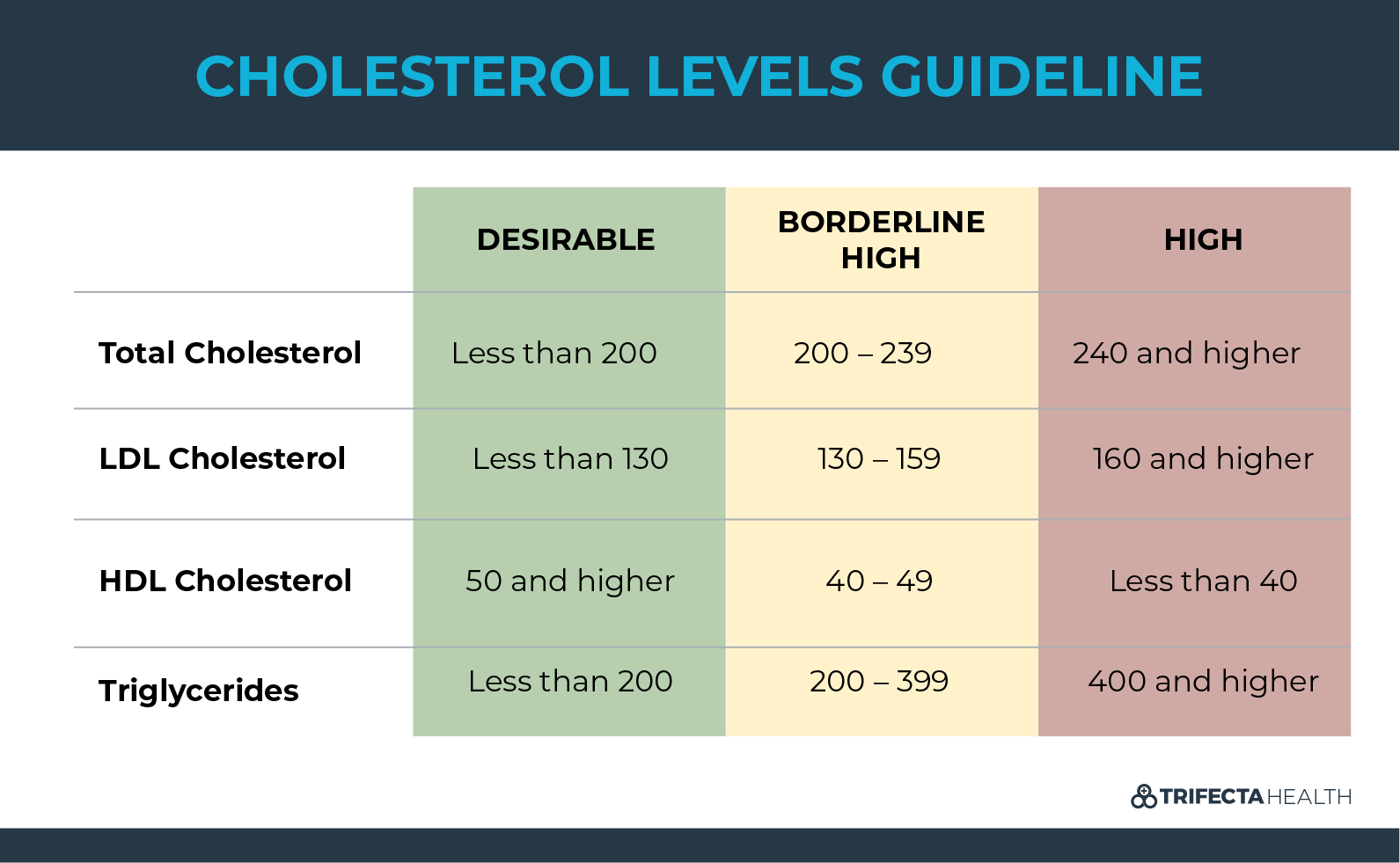 As a rule, the SCORE scale (Systematic Coronary Risk Evaluation) is used for this purpose.
As a rule, the SCORE scale (Systematic Coronary Risk Evaluation) is used for this purpose.
* For current information, please contact the contact center at tel. 8 (812) 600-42-00
It is recommended to donate blood strictly on an empty stomach (12-14 hours of fasting). Drinking – water, as usual. Within three days, exclude alcohol intake, do not abuse fatty foods. Stop smoking 1 hour before the study.
Similar tests
Lipidogram (total cholesterol, triglycerides, HDL, LDL, VLDL, atherogenic index, FFA)
1 day
from 1 135 ₽
Add to cart
Lipoprotein (a)
up to 6 days
from 1 000 ₽
Add to cart
total sterol, triglycerides, HDL, LDL, VLDL, atherogenic coefficient, FFA , apoA1, apoB, apoB/apoA1 ratio)
1 day
from 1,555 ₽
Add to cart
from 580 ₽
Add to cart
Forecast of atherosclerosis development (apoA, apoB, CRP, apoB/apoA1 ratio)
1 day
from 1,630 ₽
Add to cart
003
1 day
from 180 ₽
Add to cart
Apolipoprotein B
1 day
from 330 RUB 330 ₽
Add to cart
Lipidogram (total cholesterol, triglycerides, HDL, LDL, VLDL, atherogenic coefficient)
1 day
from 1,000 ₽
Add to cart Add to cart
Triglycerides
1 day
from 180 ₽
Add to cart
Total cholesterol
1 day
from 120 ₽
Add to cart
The analysis is available in these centers:
Medical center on Bogatyrsky pr. , 4
, 4
Medical center on the street. Moiseenko, 5
Medical center on Prosveshcheniya avenue, 14k4
Medical center on the street. Savushkina, 14
Laboratory terminal on the street. Turku, 5/13
Medical center on Okhtinskaya alley, 4 (Murino, Leningrad region)
Laboratory terminal on the street.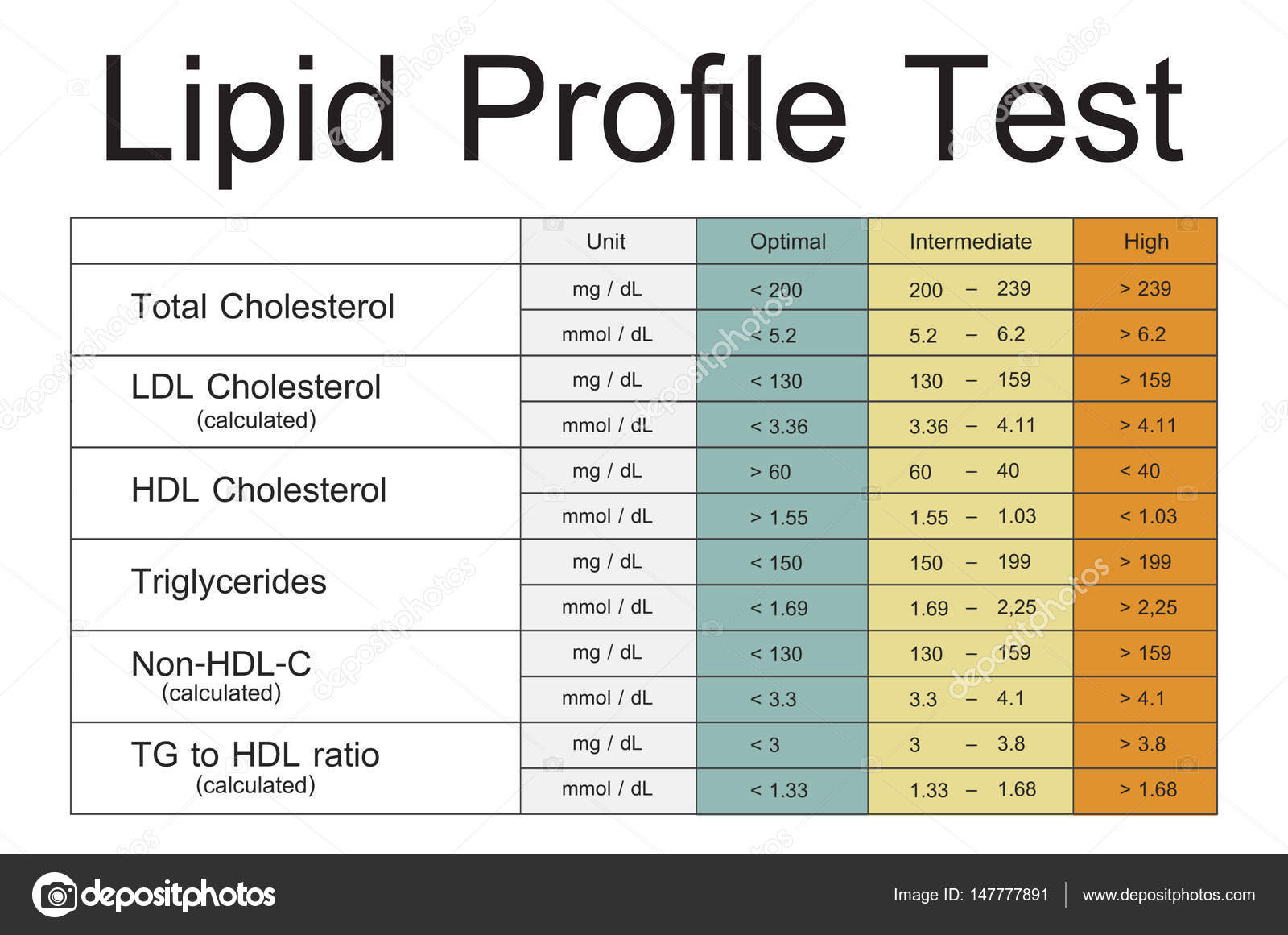 Pestelya, 25A
Pestelya, 25A
Laboratory terminal on the street. Oleko Dundicha, 8, building 2
Laboratory terminal on the street. Budapestskaya, 6
Medical center at Pulkovskoe shosse, 28A
Laboratory terminal at Nastavnikov Ave., 36k2
Laboratory terminal at Aleksandrovskaya Ferma avenue, 8
Medical center on Leninsky pr. , 88
, 88
Medical center on Kondratievsky prospect, 62k3
ORTOKROSS clinic on the 5th line of V.O., 8A (official partner)
Laboratory terminal at Kronverksky pr., 31 (official partner)
Clinic “PulkovoStom” on Pulkovskoye shosse, 26, building 6. (official partner)
Laboratory terminal on the street.

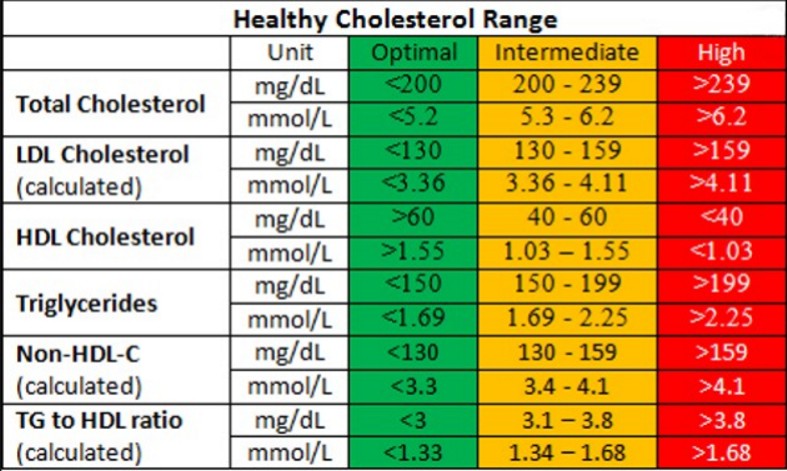
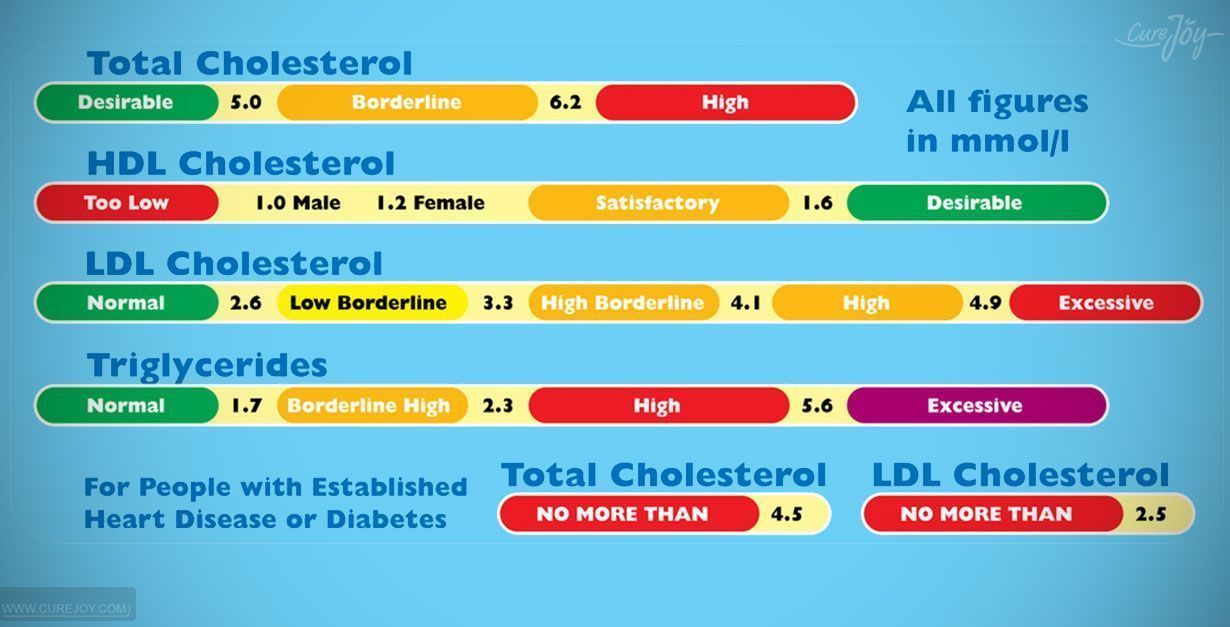 View of a practical oncologist. Laboratory justifications.
View of a practical oncologist. Laboratory justifications.